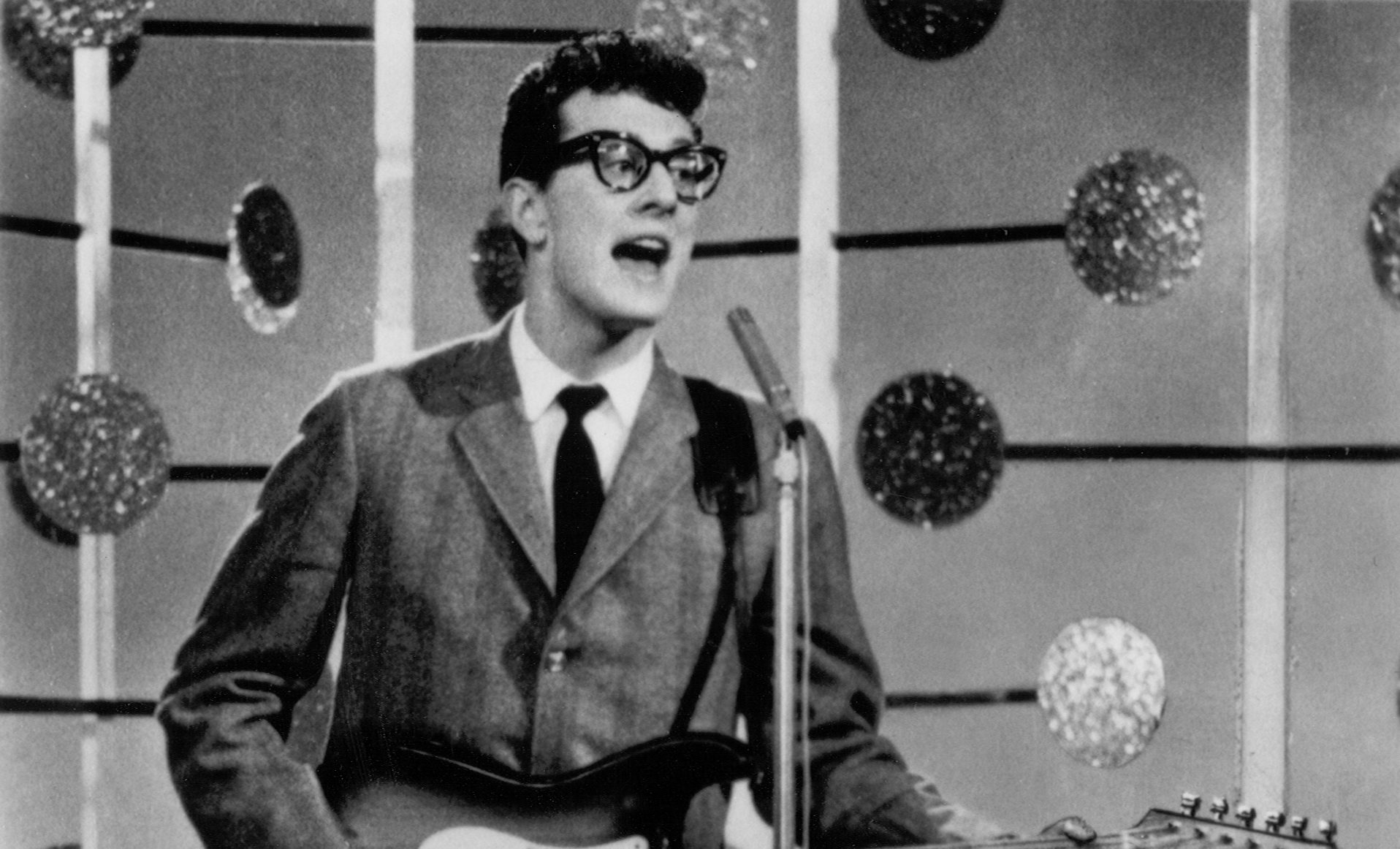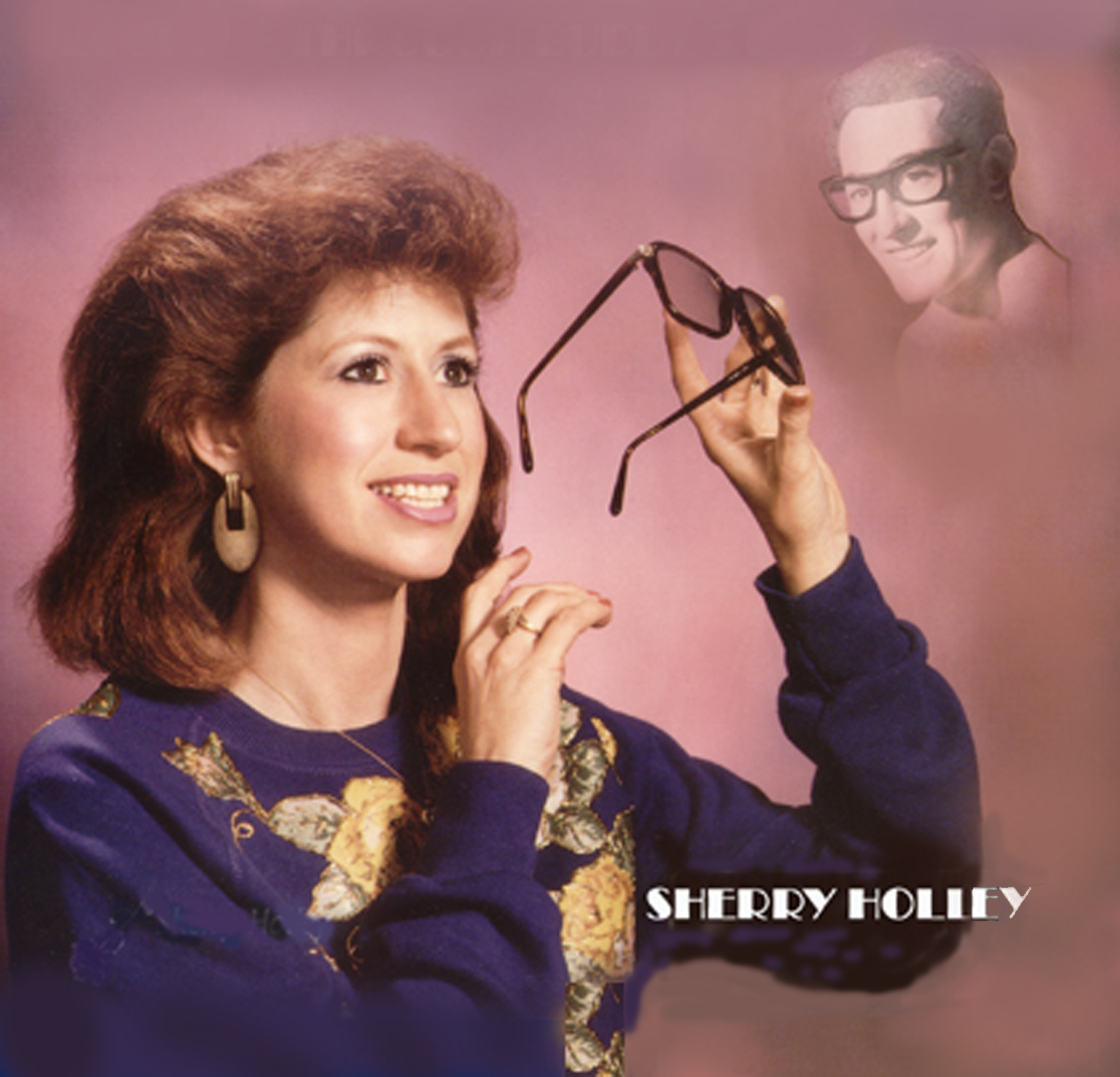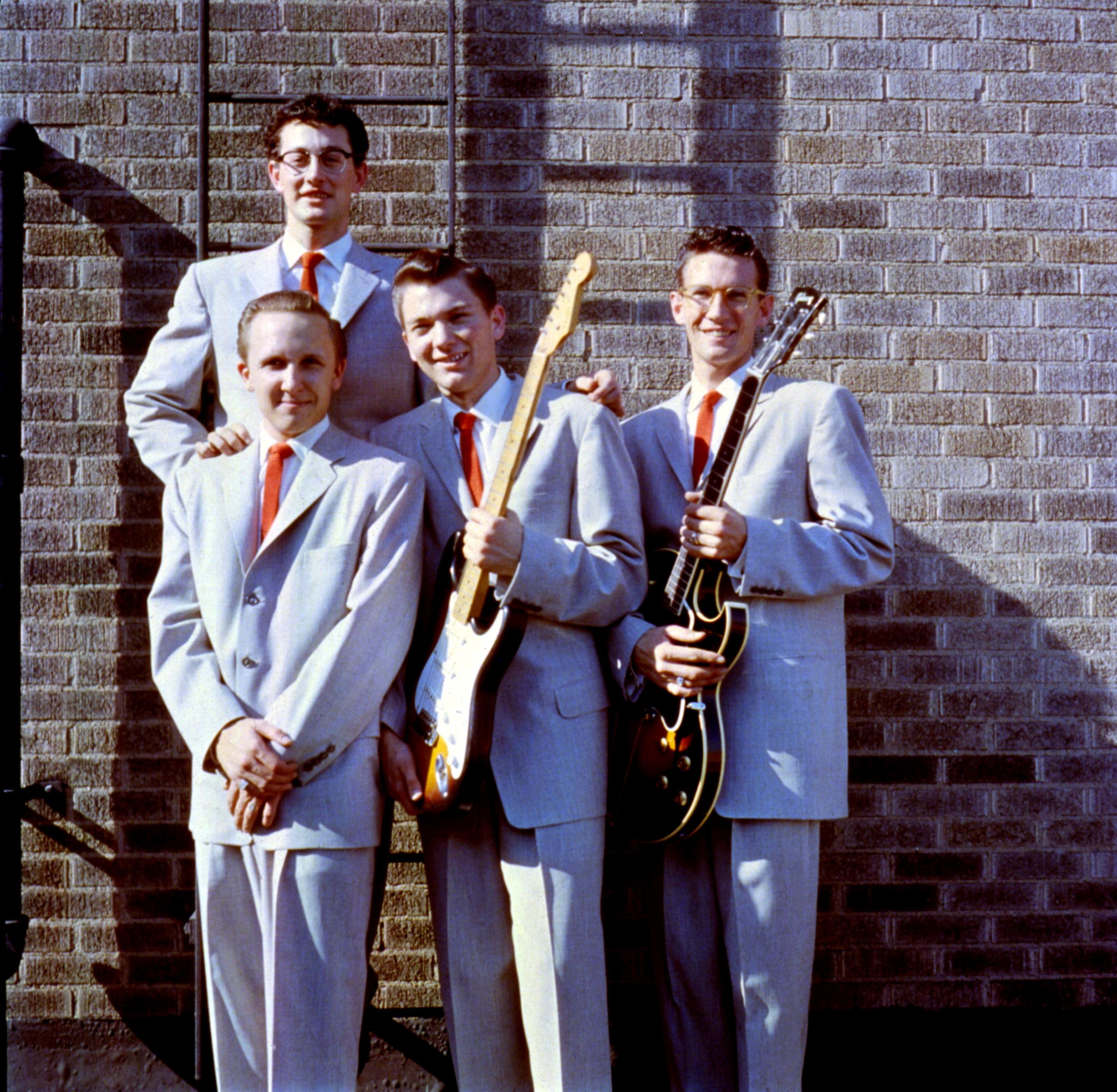
THE legacy of Buddy Holly can be seen everywhere, but The Beatles were huge fans.
They even took their name from his Crickets, also going for an insect theme, and John Lennon and Paul McCartney both regularly cited him as a main influence.
The pair went to see him for the first time at Sunday Night at the London Palladium, studying not just his tunes but the whole style, his dress sense, on-stage moves, the way Holly chatted between songs and the way he came up with simple but unforgettable lyrics.
Melodies that would get people whistling and then unable to get them out of their head, still whistling them as they wandered into the record shop to buy the latest single – it was stuff that Buddy Holly mastered first, and students like John and Paul then copied.
Lennon’s Quarrymen were already covering That’ll Be The Day, which they even did it in their first 1958 recording session.
When The Beatles did Holly’s Words Of Love, they did it at as close to the original as they could. Stuff this good didn’t need altering.
As late in their career as 1969, working up a sweat at the start of the Let It Be sessions, the Fabs loosened up with Mailman, Bring Me No More Blues, a song Buddy had made popular – even if he hadn’t penned it himself. Lennon’s famous cover versions album in 1975, Rock ’n’ Roll, featured Peggy Sue.
McCartney even bought the publishing rights to Buddy Holly’s song catalogue. Just as Michael Jackson paid through the nose for The Beatles’ catalogue, Macca had the wallet open for Buddy’s.
“John and I started to write because of Buddy Holly,” said McCartney, in surely the ultimate compliment anyone could pay him.
“It was like, ‘Wow, he writes and is a musician!’ People these days take it for granted that you do, but nobody used to write their own material then.
“I still like Buddy’s vocal style and his writing. He was completely different, out of Nashville, so that introduced us to the country music scene.”
Another person who has never forgotten Holly is his niece, Sherry Holley, an artist, singer and guitarist herself, who keeps his memory alive.
Speaking to The Weekly News, she said: “I remember him as a wonderful uncle.
“One of my memories is he and Maria, his wife, giving me a doll which I still have in my bedroom. He was protective of me, too.
“We had a huge church with a great big basement, and I got lost down there. He grabbed my hand and helped me find my parents again. I’ve never forgotten.
“I don’t feel angry he died so young, just sad. I was just a little girl and so hurt inside.
“I remember crying in school all the next day, and they asked me what was wrong. It was devastating and I just didn’t understand it.”
Sherry’s father, Larry, got to meet McCartney in England, and she later met him herself.
As a man who has done it all and who would surely have been admired by Buddy, Sherry and her family were very taken with how much McCartney reveres Holly.
Holly would go on to do several jobs in the studio, including production – clearly knowing better than everyone around him exactly what he wanted, he needed complete control to get it.
This was another aspect of making records that nobody had dared attempt before he did, in an industry where companies often expected to dictate how you dressed, behaved, played, sang, wrote and recorded.
Buddy Holly was having none of it and the success of his recordings proves he was right to go his own way.
Producer Owen Bradley had chosen session musicians and did the arrangements, which is something even The Beatles would happily allow when a genius like George Martin was doing it.
But Buddy hated losing any kind of creative control and felt he was vindicated when his Decca recordings didn’t do much and the company told him his deal would not be renewed.
Norman Petty, who would later record many surf bands and die at just 57, proved not just an adept producer, manager and guide – he could also write a mean song alongside Buddy.
Everyday, Heartbeat, It’s So Easy!, Not Fade Away, Oh Boy, Rave On, True Love Ways. It’s not bad, is it?
Most were co-written with Holly and all remain classics.
With Jerry Allison on drums, Joe Mauldin on bass and Niki Sullivan on rhythm guitar, Buddy was left to do the lead vocals and the fancier guitar parts.
Finally hearing the sound he had dreamed of getting, the songs poured out of Buddy.
As they couldn’t contractually release That’ll Be The Day in Buddy’s name just yet, it was Allison who came up with the Crickets name.
Brunswick agreed an unusual deal with Holly, in which he had artistic control – great – but also financial responsibility – not so great.
He had to sell records and show everyone that the sounds he’d imagined were not just the kind he wanted to hear – the whole world had to fancy them too.
His ears and imagination hadn’t, of course, been playing tricks on him and the world would lap up this new music from the guy in the thick spectacles.
Irvin Feld was a big name on the scene. Born in Maryland in 1918, he would become boss of the famous Barnum & Bailey Circus, he’d discover Paul Anka, and he was ahead of his time in the way he promoted rock and pop concerts and groups.
It was Feld who Petty chose to look after Holly and his Crickets on their first big tour after That’ll Be The Day came out in May 1957.
Their first shows at New York’s Apollo Theater did not go down that well, with audiences looking a tad underwhelmed.
Clever lad that he was, Holly added the song Bo Diddley to their set list and its energy got them going.
After a week of concerts in the Big Apple, That’ll Be The Day was steadily climbing the charts.
Petty immediately began to prepare not one but two long-playing records.
One would be a solo Buddy Holly effort, the other for the Crickets themselves.
If Buddy was secretly thrilled to appear on famed shows like American Bandstand, the best moment of his first serious foray into New York was meeting and befriending the Everly Brothers.
Like anyone who crossed paths with Buddy Holly, the brothers never forgot him and always praised his memory.
“We got to be very close friends with Buddy Holly and the Crickets,” recalled Don Everly, “and he wrote a couple of things for us. Love’s Made A Fool Of You might have been one.
“We took him and the Crickets down to our clothes stores in New York too. We had just learned to dress a little sharper ourselves and they noticed it, so we took them to all the places.”
The late Phil Everly had memories too, saying: “The last time I was with Buddy was at the Park Sheraton in New York. Eddie Cochran was in town and we were all up at his room there. Buddy was having a drink and he asked me to make sure he got home that night, and I did.
“I don’t mean to make it sound like we were a bunch of drunks. That wasn’t anywhere near the case.”
The only thing Buddy was drunk on was success. That’ll Be The Day was top of America’s Best Sellers In Stores chart and would be UK Singles No 1 for three weeks.
When Peggy Sue was put out, with Everyday on the other side, Holly was finally able to be properly credited on the label, and it also shot up to the top of the charts.
If New York and elsewhere were the big-time glamour cities they had to conquer, Buddy and his band were pining for the relatively smalltown Lubbock.
They headed back to see their families, but Buddy found his high school girlfriend, the magnificently-named Echo McGuire, had chucked him for a new lad.
Buddy consoled himself by going out with June Clark but, when she also ended their relationship, he admitted he was still coming to grips with how much Echo McGuire had meant to him.
It might have been heartbreaking for a lad of his age, but it was great songwriting material. To this day, stars like Taylor Swift vouch for the inspiration that heartbreak can bring.
As you’ll see in next week’s conclusion of our Buddy Holly series, there was plenty of heartbreak and worse to come.


Enjoy the convenience of having The Sunday Post delivered as a digital ePaper straight to your smartphone, tablet or computer.
Subscribe for only £5.49 a month and enjoy all the benefits of the printed paper as a digital replica.
Subscribe
